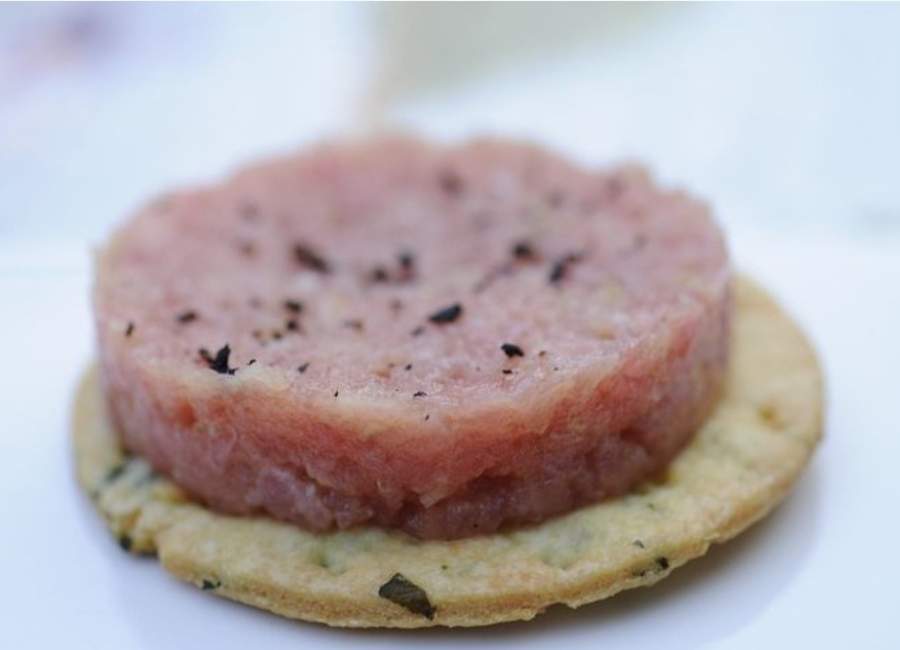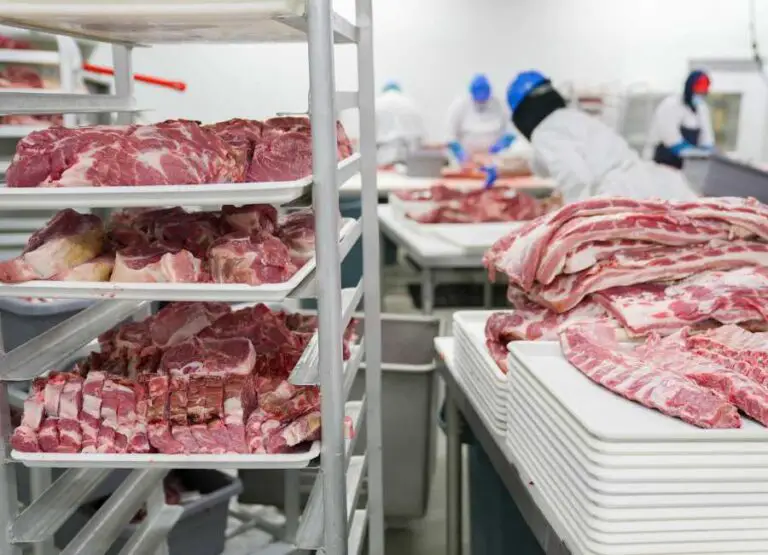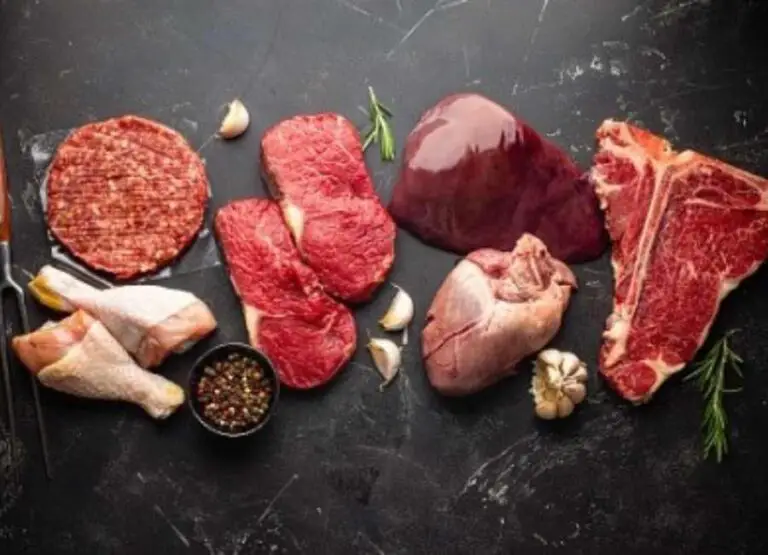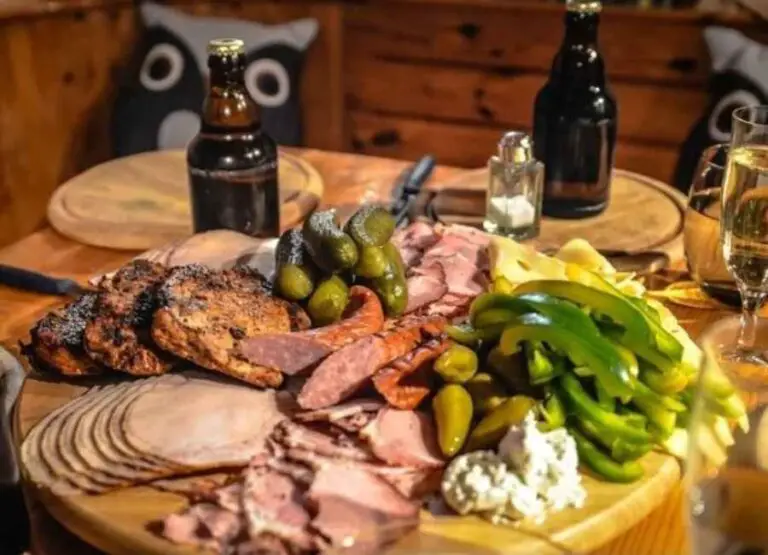Why Ground Beef Turns Brown In Fridge
Have you ever opened your fridge to find that the ground beef you bought just a few days ago has turned brown?
It’s a common problem and can leave you wondering whether it’s still safe to eat.
So, what’s the deal with brown ground beef anyway?
In this blog post, we’ll dive into the science behind why ground beef turns brown in the fridge and whether it’s still okay to consume.
Ground beef turns brown in fridge
Ground beef frequently turns brown in the refrigerator, but this doesn’t always indicate that the meat is bad or unfit for consumption.
Iron in the flesh interacts with oxygen when it is exposed to air, turning it from red to brown.
It is a normal chemical reaction that takes place in many different types of meat and is referred to as oxidation.
The meat may have gone bad and be unsafe to eat if it has a strong or unpleasant smell, a slimy texture, or if it has been in the refrigerator for more than a few days.
Always err on the side of caution and discard your ground beef if you have any doubts about its safety.
Why Does Ground Beef Turn Brown in the Fridge?
Ground beef can turn brown in the fridge due to oxidation, which is a normal chemical change in myoglobin caused by exposure to oxygen.
This does not necessarily mean that the meat has gone bad, and it is still safe to eat as long as it has been properly stored and has not exceeded its expiration date.
However, if the meat has a foul odor or slimy texture, it should be discarded.
Chemical reactions that cause the ground beef to turn brown
Oxidation, a regularly occurring chemical reaction, is what causes ground beef to turn brown.
The iron and enzymes in the protein react with the oxygen in the air to change the color of the meat.
When the flesh is exposed to air for a long time, a typical reaction takes place.
Before cooking the meat, it is advised to further investigate if the flesh is turning greyish-brown since this could be a warning that it is beginning to rot.
Temperature, acidity, oxygen availability or deficiency, water content, and reaction time are only a few of the variables that affect the specific chemical reactions that cause food to brown.
Factors that Affect Ground Beef Browning
There are several factors that can affect the browning of ground beef, including:
- Fat content: Ground beef with higher fat content will brown more quickly than leaner beef.
- Temperature: Cooking ground beef at a higher temperature will result in faster browning.
- Pan surface: Cooking ground beef on a surface that is too hot or too cold can affect browning.
- Sugar content: Adding sugar to ground beef can promote browning, as it reacts with the proteins and forms a Maillard reaction.
- pH level: Acidic ingredients, such as tomatoes or vinegar, can slow down browning.
- Moisture content: Excessive moisture can inhibit browning and lead to steaming instead.
- Seasonings: Flavorings such as salt or Worcestershire sauce can accelerate browning.
- Age of beef: Older beef can brown more quickly due to a higher pH level.
- Storage: Ground beef that has been stored for a long time can also brown more quickly due to the breakdown of proteins and fats.
The texture, juiciness, and flavor of the ground beef can also be impacted by these variables, therefore it’s crucial to take them into account when cooking.
How to determine whether browned beef has gone bad
To determine whether browned beef has gone bad, you can use your senses. If the beef is slimy or has an off odor, it may be spoiled.
While brown meat can be perfectly fine, it could suggest the meat is a little older.
Additionally, if the beef has turned brown or gray on the outside, it may be beginning to rot and should be thrown away.
It’s important to use ground beef within one to two days of purchase and cuts of beef within three to five days to avoid spoilage.
Learn more about how long ground beef can sit out.
Tips to minimize ground beef browning and spoilage
Here are some common tips for the proper handling and storage of ground beef:
- Choose fresh ground beef that is cold to the touch.
- Store your ground beef in the coldest part of your refrigerator, at a temperature of 40°F or below.
- Keep raw meat separate from other foods, especially ready-to-eat foods like fruits and vegetables, and cooked meats and poultry.
- Always wash your hands and surfaces with warm, soapy water before and after handling raw ground beef.
- Cook your ground beef to an internal temperature of 160°F to kill harmful bacteria that may cause illness.
- Use or freeze your ground beef within 2 days of purchase.
- If you won’t be using your ground beef within 2 days, freeze it in a well-sealed package.
- Freeze your ground beef for up to 4 months to maintain quality.
- Always thaw frozen ground beef safely in the refrigerator, microwave, or under cold running water.
FAQs
Why does ground beef turn brown in the fridge?
Ground beef turns brown in the fridge due to the process of oxidation, which occurs when the meat is exposed to oxygen.
This natural process creates a chemical reaction that changes the color of the meat.
Is it safe to eat ground beef that has turned brown?
In general, fresh ground beef should be a bright red color, but slight browning doesn’t necessarily mean it has gone bad.
However, if the meat smells off or has a slimy or sticky texture, you should not consume it.
How long can you keep ground beef in the fridge before it turns brown?
Ground beef is safe to eat up to three days after it is purchased, but it may begin to turn brown even before then.
It is generally recommended to use ground beef within one to two days to ensure freshness.
Learn more about preparing and cleaning ground beef.
Can you still cook browned ground beef?
If you notice browned ground beef in the fridge, it is still safe to cook as long as it doesn’t have an off smell or slimy texture.
Cooking will kill any bacteria that may have grown on the meat and make it safe to eat.
How can you prevent ground beef from turning brown in the fridge?
To prevent ground beef from turning brown, store it in an airtight container or wrap it tightly in plastic or foil to limit its exposure to oxygen.
It can also be helpful to store it at the back of the fridge, where temperatures are lower.
Is browned ground beef less nutritious or flavorful than fresh ground beef?
Browned ground beef may have a slightly different flavor and texture than fresh ground beef due to the oxidation process, but it is not significantly less nutritious.
It is still a good source of protein and other important nutrients.
Conclusion
In conclusion, ground beef turning brown in the fridge is a natural process that occurs due to oxidation.
While it may not look as appetizing, it is still safe to consume as long as it has been stored properly and within the recommended time frame.
To ensure the quality and freshness of your ground beef, it is best to use it within 1–2 days of purchase or to freeze it for later use.
By following these simple tips, you can enjoy delicious and safe meals made with ground beef.






![Do Smoked Meats Need To Be Refrigerated [Answered]](https://foodcreeks.com/wp-content/uploads/2023/03/Do-Smoked-Meats-Need-To-Be-Refrigerated-768x555.jpg)
